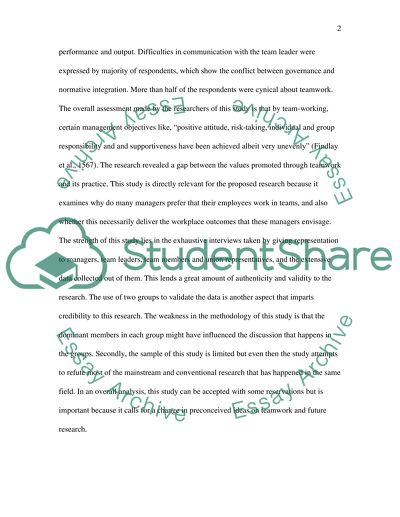Cite this document
(The Exaggerated Effectiveness of Teamwork Essay Example | Topics and Well Written Essays - 1750 words, n.d.)
The Exaggerated Effectiveness of Teamwork Essay Example | Topics and Well Written Essays - 1750 words. https://studentshare.org/environmental-studies/1411678-the-exaggerated-effectiveness-of-teamwork
The Exaggerated Effectiveness of Teamwork Essay Example | Topics and Well Written Essays - 1750 words. https://studentshare.org/environmental-studies/1411678-the-exaggerated-effectiveness-of-teamwork
(The Exaggerated Effectiveness of Teamwork Essay Example | Topics and Well Written Essays - 1750 Words)
The Exaggerated Effectiveness of Teamwork Essay Example | Topics and Well Written Essays - 1750 Words. https://studentshare.org/environmental-studies/1411678-the-exaggerated-effectiveness-of-teamwork.
The Exaggerated Effectiveness of Teamwork Essay Example | Topics and Well Written Essays - 1750 Words. https://studentshare.org/environmental-studies/1411678-the-exaggerated-effectiveness-of-teamwork.
“The Exaggerated Effectiveness of Teamwork Essay Example | Topics and Well Written Essays - 1750 Words”. https://studentshare.org/environmental-studies/1411678-the-exaggerated-effectiveness-of-teamwork.


